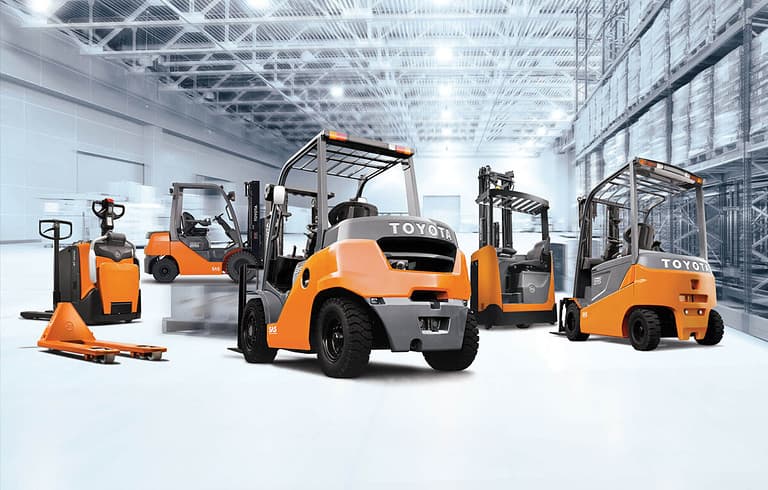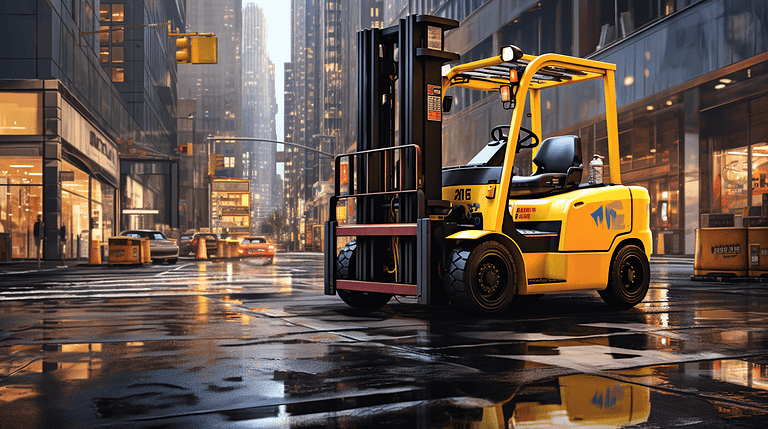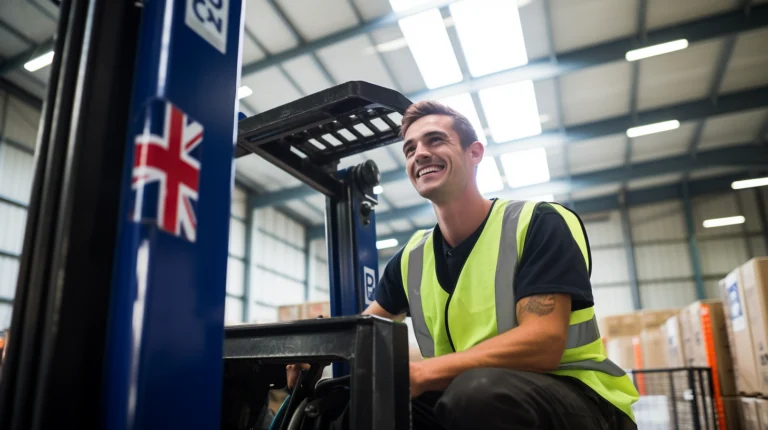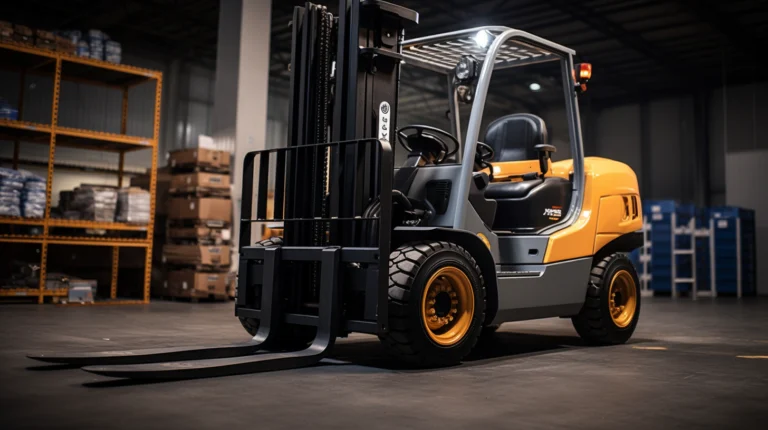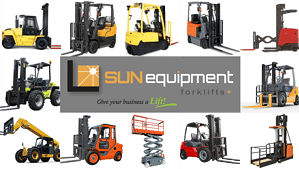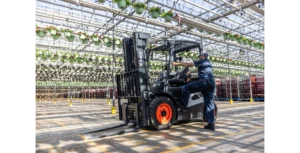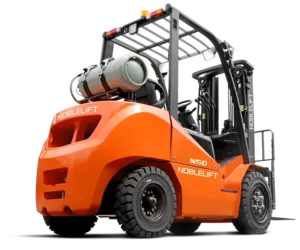
The forklift battery market is changing fast, thanks to new technology and a growing focus on the environment. This article looks at why these changes are happening. We’ll talk about the shift from diesel to electric forklifts, the latest in battery tech, and why industries like warehousing and manufacturing are leading the way. We’ll also look at how different parts of the world are responding to these changes. By the end, you’ll have a clear picture of where the forklift battery market stands now and where it’s headed in the future.
Key Takeaways
- Electrification is transforming industrial machinery, with a clear pivot towards electric forklifts for sustainability and efficiency.
- Battery technology has greatly advanced, with newer models offering significantly longer runtimes and faster charging.
- Warehousing and manufacturing sectors are leading the shift to electric forklifts, with companies like IKEA at the forefront.
- The Asia Pacific region is pivotal in the forklift battery market due to its large battery production and commitment to renewable energy.
- The market is competitive, with innovations, strategic collaborations, and expansions shaping the future landscape.
Electrification in the Forklift Battery Market: The New Norm
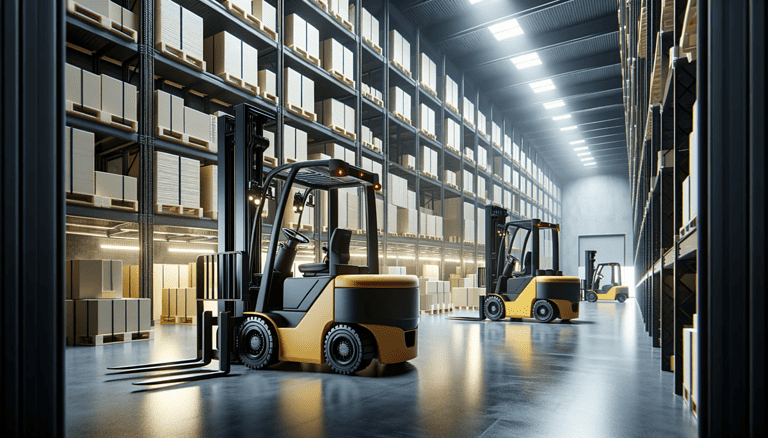
Electrification has swiftly become a cornerstone of modern industrial strategy. As the world grapples with the exigencies of climate change and environmental degradation, industries are under mounting pressure to reduce their carbon footprint. One notable response to this has been the significant move away from conventional, diesel-powered machinery to more eco-friendly, electric alternatives.
A telling example of this is the automotive industry. Major players like Tesla, Nissan, and BMW have heavily invested in electric vehicles (EVs), not merely as a marketing strategy but as a forward-looking commitment to sustainability. Similarly, in the industrial context, the push towards electrification is most evident in the machinery utilized daily, particularly forklifts.
According to a report by the Industrial Truck Association, there has been a consistent year-on-year increase in the sales of electric forklifts, with these eco-friendly variants now accounting for nearly 65% of the total forklift sales in developed markets.
This transition is fueled not just by environmental concerns but also the long-term economic advantages. Electric forklifts, for instance, have proven to be more cost-effective in terms of maintenance and operation when compared to their diesel counterparts.
Battery Technology: The Catalyst for Change
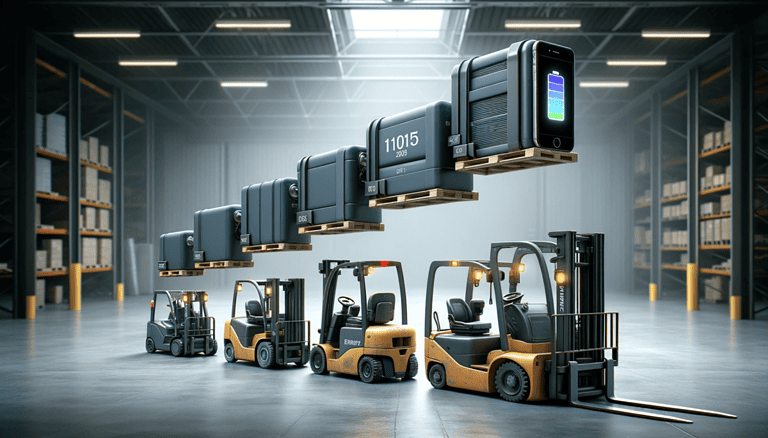
Battery technology, often described as the lifeblood of electric machinery, has witnessed a meteoric rise in terms of innovation and efficiency. The last decade alone has seen batteries evolve from bulky, short-lived power sources to sleek, durable units capable of supporting machinery for extended durations.
Consider the smartphone industry, for example. Early mobile phones required frequent charging and carried significant weight due to their batteries. Modern smartphones, however, boast of day-long battery life while being incredibly lightweight, all thanks to advancements in battery technology.
Translating this to the realm of industrial machinery, especially forklifts, the implications are profound. Modern forklift batteries, particularly those designed in the last five years, offer up to 40% longer runtimes, as highlighted in a study from the Journal of Energy Storage. This ensures that forklifts can operate for extended shifts without needing frequent recharges, thereby boosting operational efficiency.
Furthermore, these batteries now come equipped with faster charging capabilities, reducing downtime. Maintenance, which once was a significant concern with older battery models, has become considerably hassle-free. The latest battery designs prioritize user-friendliness, with easy-to-monitor health indicators and simpler replacement processes.
This evolution in battery technology not only facilitates the smooth operation of electric forklifts but also plays a crucial role in their increasing adoption across industries. The benefits are multifold: from cost savings in the long run to a reduced carbon footprint, making electric forklifts an attractive proposition for businesses.
Warehousing and Manufacturing: Leading the Charge
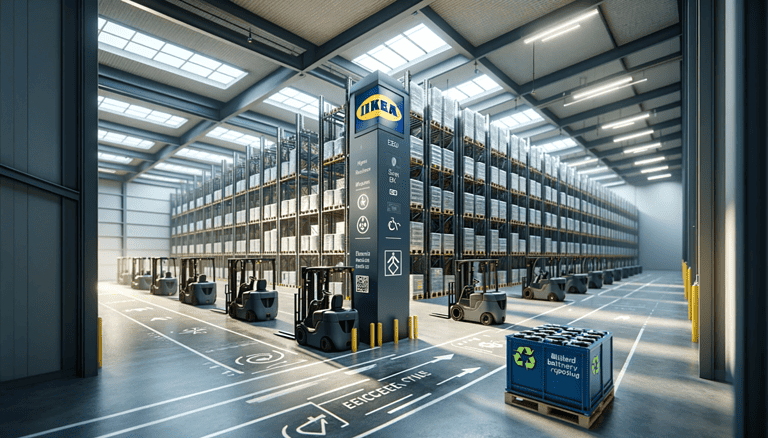
The warehousing and manufacturing sectors are more than just cogs in the global industrial machinery; they’re transformative leaders pushing the boundaries of sustainable operations.
With the ever-growing demands of global supply chains, these sectors are consistently under pressure to optimize operations, reduce costs, and ensure timely deliveries, all while being environmentally conscious.
A case in point is IKEA’s distribution centers. The Swedish furniture and home goods giant, known for its commitment to sustainability, operates numerous distribution centers globally and has been methodically transitioning to electric forklifts. IKEA’s rationale is rooted in both operational efficiency and environmental responsibility.
Electric forklifts, with their silent operation, are ideal for large distribution spaces where disturbances need to be minimized to ensure workflow efficiency. Additionally, the clean operation of these forklifts, devoid of any emissions, aligns perfectly with IKEA’s goal of reducing its carbon footprint and providing a healthier workspace for its employees.
Furthermore, IKEA’s holistic approach to sustainability means they don’t just stop at using electric forklifts. They’re also deeply invested in exploring recycling and repurposing initiatives for used forklift batteries, turning them into energy storage units or even backup power sources for their stores and warehouses.
Battery Varieties: Lead Acid Versus Lithium-ion
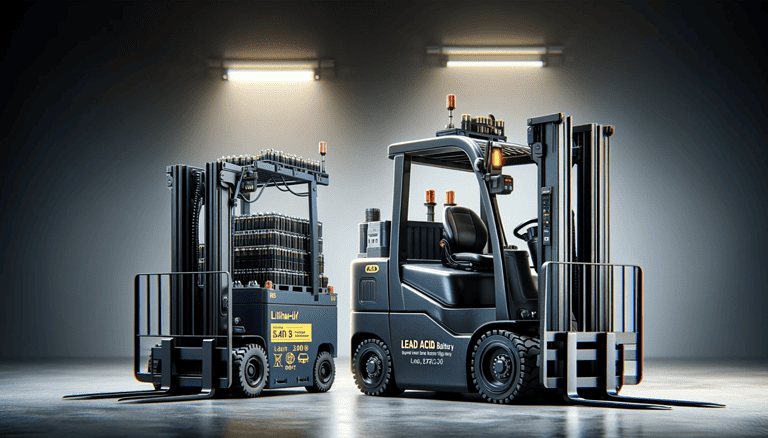
In the vast spectrum of battery technology, two types have emerged as frontrunners for industrial applications, especially in forklifts: lead acid and lithium-ion. Each comes with its unique set of advantages, and their adoption often depends on specific industry needs and operational contexts.
Lead Acid Batteries: Historically, lead acid batteries have been the mainstay of industrial machinery. Their robustness, combined with a proven track record of reliability, made them an obvious choice. They boast a high power-to-weight ratio, making them suitable for heavy-duty operations.
Additionally, their cost-effectiveness, especially in terms of initial investment, has been a major draw for many businesses. Companies like Crown Equipment Corporation, a major player in the forklift market, have long championed the use of lead acid batteries, emphasizing their consistent performance and ease of maintenance.
Lithium-ion Batteries: These are the newer entrants in the industrial scene but have quickly gained traction due to their array of benefits. A significant advantage is their energy density, which allows them to store more energy without increasing their size.
This makes forklifts powered by lithium-ion batteries more agile, a crucial factor for operations requiring tight maneuvers. Moreover, their fast charging capabilities reduce downtime, a boon for industries operating round-the-clock. Recent projects, like that of HANGCHA’s XH series electric forklift trucks, highlight the industry’s growing confidence in lithium-ion technology.
However, the choice between these battery types isn’t binary. A survey conducted by Material Handling & Logistics revealed that while many industries prefer lead acid batteries for their established performance metrics, others are keenly exploring lithium-ion options, especially when long operational hours, quick charging, and space constraints are key considerations.
Asia Pacific: A Nexus of Innovation and Expansion
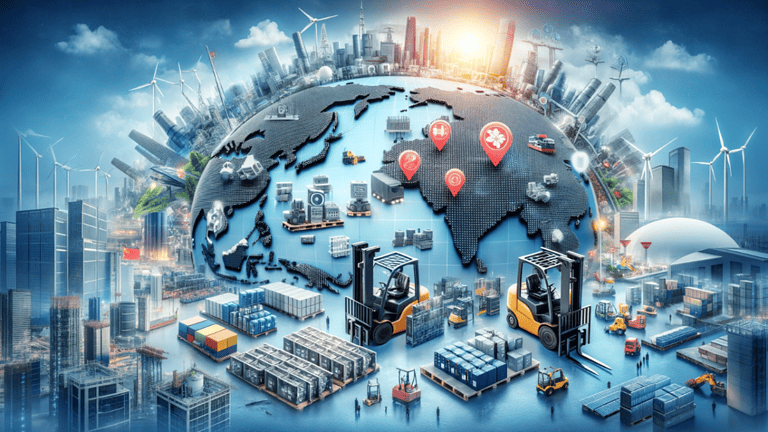
The Asia Pacific region, with its rich tapestry of emerging economies, diverse industrial sectors, and burgeoning technological hubs, has firmly positioned itself as a pivotal player in the global forklift battery market. But what factors contribute to this region’s rapid ascent in this sector?
Prolific Battery Production: Asia Pacific is home to some of the world’s largest battery manufacturers. Countries like China, South Korea, and Japan dominate global battery production, both in terms of volume and technological innovation. For instance, CATL in China, one of the world’s largest lithium-ion battery producers, has been instrumental in driving down battery costs through economies of scale and continuous R&D.
Diverse Industrial Base: The region boasts a wide range of industries, from electronics and semiconductors to chemicals and automotive. This diversity translates to varied applications for forklifts and, by extension, a robust demand for forklift batteries.
Commitment to Renewable Energy: The Asia Pacific region is witnessing an aggressive push towards renewable energy. Countries like India have set ambitious renewable energy targets, aiming to achieve 450 GW of renewable energy capacity by 2030. This drive towards green energy further underscores the need for efficient energy storage solutions, amplifying the demand for advanced batteries.
Rapid Urbanization and Infrastructure Development: As cities expand and infrastructure projects multiply, the need for efficient warehousing and logistics solutions becomes paramount. Electric forklifts, with their operational and environmental advantages, naturally find favor in these scenarios.
Regional Case Study: Taking a closer look at India offers insight into the region’s dynamics. With its “Make in India” initiative, the country is actively promoting domestic manufacturing.
This has led to significant investments in sectors like automotive, electronics, and textiles, all of which require extensive warehousing solutions. As these industries grow, the demand for electric forklifts and their batteries sees a corresponding rise.
The Competitive Arena: Innovations, Collaborations, and Expansions

In the ever-evolving forklift battery market, staying ahead requires not only product excellence but also strategic foresight. Key players are constantly navigating this dynamic environment, leveraging various strategies to solidify their market positions and address emerging needs.
Product Innovations: A driving force in the market is the continuous introduction of new and improved products. Companies are investing heavily in R&D to enhance battery performance, longevity, and safety. For instance, ENERSYS, a global leader in stored energy solutions, recently unveiled its next-generation battery technology, promising extended runtimes and reduced maintenance needs.
Strategic Collaborations: Partnerships and collaborations often provide the impetus for rapid expansion and technological advancement. A notable recent collaboration is between Exide Industries Ltd. and SVOLT Energy Technology Co. Ltd. This partnership aims to develop and manufacture advanced lithium-ion cells in India, combining Exide’s vast market experience with SVOLT’s cutting-edge technology.
Capacity Expansions: To meet the growing demand, several companies are expanding their production capacities. Trojan Battery Company, for example, has initiated plans to increase its production capabilities, ensuring they can cater to the rising demand from various industrial sectors.
Market Entries and Mergers: The lucrative potential of the forklift battery market has attracted new entrants, while existing players look for mergers and acquisitions to consolidate their positions. Narada Power Source Co. Ltd., traditionally known for its telecommunications backup solutions, has ventured into the forklift battery space, signaling the market’s expanding horizons.
Customer-Centric Approaches: Beyond product and strategic developments, companies are also focusing on enhancing customer experiences. Offering extended warranties, training sessions for optimal battery usage, and after-sales support are some initiatives taken to ensure customer loyalty and trust.
In this competitive milieu, companies that successfully blend innovation with strategic agility are poised to thrive. As the forklift battery market continues its upward trajectory, it promises exciting developments and breakthroughs in the coming years.
The Road Ahead: Future Prospects and Challenges
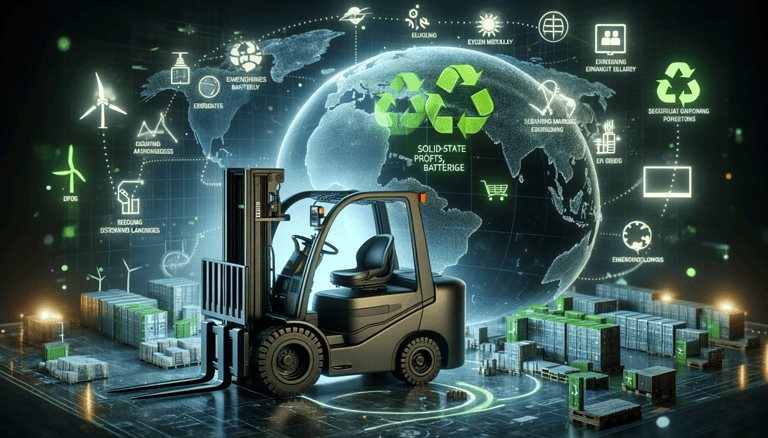
The forklift battery market, given its current trajectory, appears poised for sustained growth. However, like any burgeoning industry, it faces its set of challenges and opportunities that will shape its future.
Sustainability and Recycling: As the demand for batteries grows, so does the concern about their end-of-life management. Companies will need to invest in recycling technologies and infrastructure to ensure that used batteries don’t end up as environmental hazards. Innovative solutions, like repurposing used forklift batteries for secondary applications, could emerge as a viable strategy.
Technological Advancements: The next decade might witness breakthroughs in battery technology, potentially introducing materials and designs that are more efficient, long-lasting, and eco-friendly. Solid-state batteries, which promise higher energy density and safety, are already on the horizon and could redefine the market.
Regulatory Landscape: Governments worldwide might introduce regulations to ensure the safe production, usage, and disposal of industrial batteries. Companies will need to stay ahead of these regulatory curves, ensuring compliance while advocating for industry-friendly policies.
Market Dynamics: Emerging markets, especially in Africa and South America, might open up new avenues for growth. Companies will need to navigate these regions’ unique challenges, from infrastructure constraints to diverse industrial needs.
Challenges: While the shift to electric forklifts is commendable, it’s essential to address associated challenges. Ensuring a stable and green power supply to charge these forklifts, especially in regions where the electrical grid might be unreliable, will be crucial. Additionally, training the workforce to handle and maintain these new machines will be equally important.
In conclusion, the forklift battery market stands at an exciting juncture. The blend of technology, sustainability concerns, and global market dynamics promises a future rich in innovation and growth. Stakeholders, from manufacturers to end-users, can look forward to a realm of possibilities and opportunities in the coming years.
Sources
https://link.springer.com/article/10.1007/s11367-016-1104-y
https://www.nature.com/articles/d41586-023-01009-w
https://www.kten.com/story/42002985/lead-acid-vs-lithium-ion-batteries-which-one-is-best
https://www.factmr.com/report/forklift-battery-market
https://www.irena.org/Publications/2022/Nov/Renewable-energy-targets-in-2022
https://www.imf.org/external/pubs/ft/fandd/2021/06/the-future-of-emerging-markets-duttagupta-and-pazarbasioglu.htm
https://www.digitaljournal.com/pr/news/people-powered-news/forklift-battery-market-sustainable-solutions-driving-growth-2030


